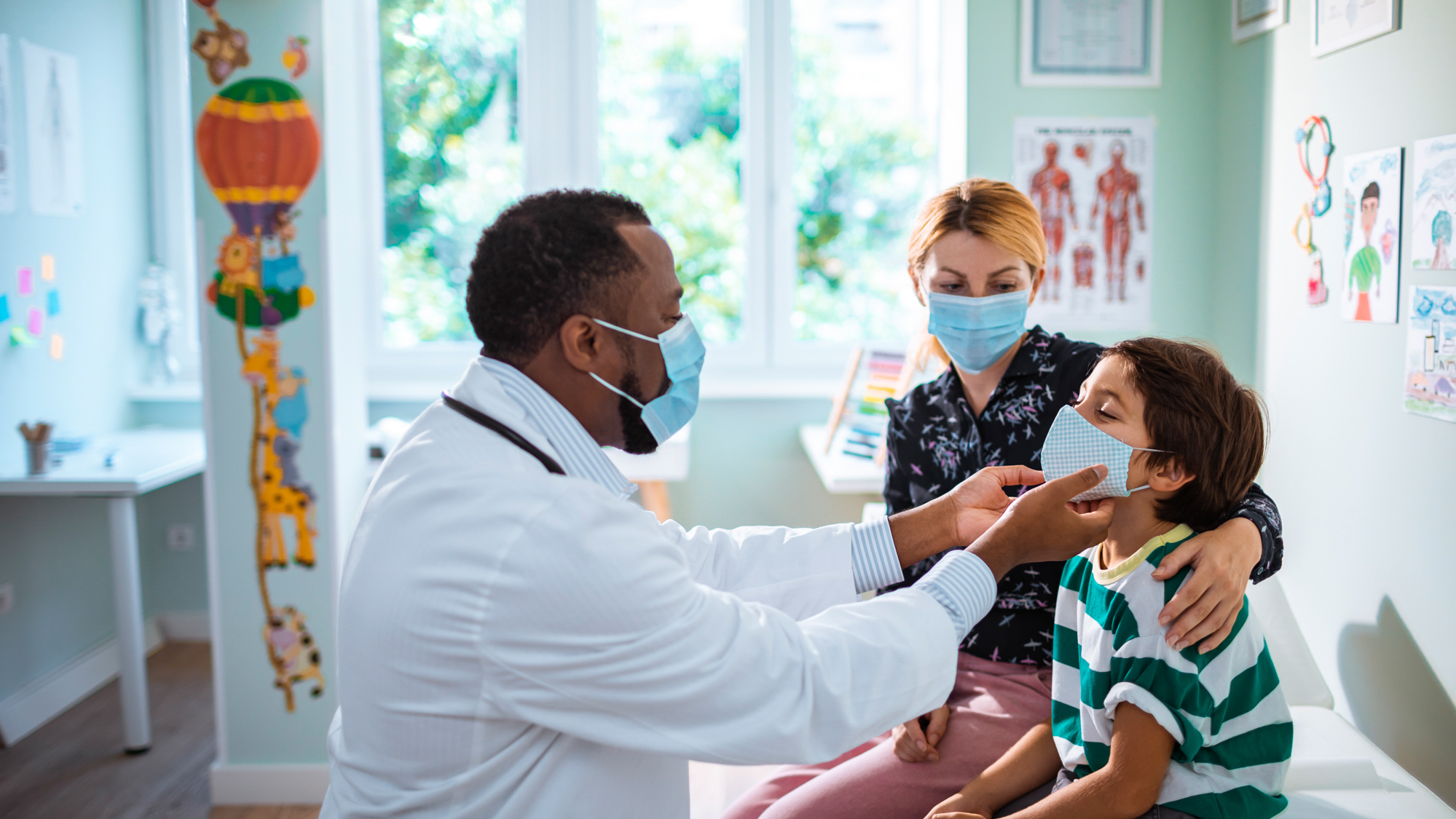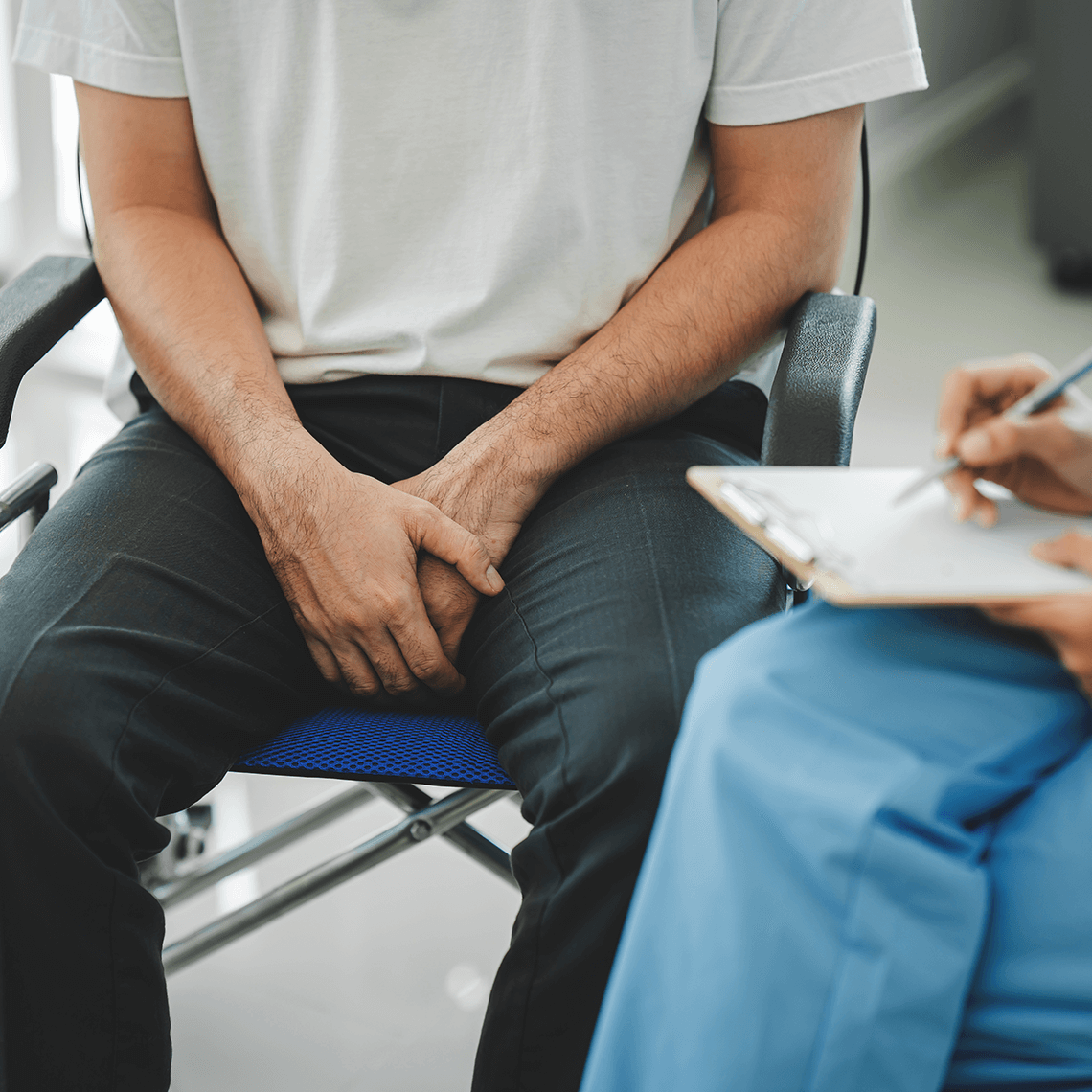Podcast
Hospital Fights to Head off Care Disparities During Pandemic
Feb 25, 2021

Commentator
- Joseph Betancourt, MD, MPH
Vice President for Equity and Community Health
Massachusetts General Hospital
Transcript
Patient safety and quality care were put at risk by the COVID-19 pandemic for a large population of patients at many hospitals throughout the country. Non-English-speaking patients and others who are typically at a disadvantage for access to health care are over-represented in the in-patient COVID wards. Health outcomes and preventive care are following the same pattern. At Massachusetts General Hospital in Boston, an established team for care equity and diversity knew early on in the pandemic that they had a lot of work to do. Over the course of the past year, they have been recruiting multilingual clinicians and conducting outreach to try to ward off an explosion in care disparity. Joining us now is the leader of that effort, Dr. Joseph Betancourt. Dr. Betancourt is a practicing internist and the Senior Vice President for Equity and Community Health at MGH.
Q.) Dr. Betancourt, thank you for joining us.
A.) Thank you so much for having me, I really appreciate it.
Q.) So about a year ago early on in the pandemic, you identified some needs and you identified some work that your team could do to address those needs and those risks for underserved populations. Can you sort of walk us through how you addressed it?
A.) Absolutely. Again, thanks for giving me a chance to share this work. So I had the great opportunity and challenge in March of last year, March 16 to be exact, to be asked to lead Mass General Brigham’s Equity & Community Health COVID response, as well as Mass General Hospital’s COVID response. And so at that time we knew that history has told us that pandemics, natural disasters, always disproportionately impact vulnerable populations. We were beginning to think about ways that might happen, the perfect storm that might lead to the pandemic impacting communities of color at higher rates and we know that that’s exactly what happened.
As we stand here today, a year later, we know that communities of color were and have been decimated by the pandemic, particularly because they really live in what is the perfect storm for the spread of coronavirus. The virus has 10 days of asymptomatic spread, and certainly communities that are densely populated, that have multigenerational housing, that have a high amount of essential workers who, quite frankly, were taking public transportation even before we were advising masks, who don’t have the luxury of working from home, all were at the center of this storm. And so all those social determinates made the pandemic just that much more devastating for communities of color locally and nationally.
And so we knew that, I can’t say that we knew exactly how it was all going to play out, but we began to think about okay, ‘what work streams might we begin to assemble to meet the assumed needs that would be coming down the pike?’ So there were several and I’ll just highlight them quickly. One was an effort that really made sure that any hotlines that we had any information was staffed in a multilingual way, that is, we pivoted towards virtual. We were able to make sure that we were also doing telephonic interactions with our patients because of the digital divide, that we delivered and created these things called care kits with masks and hand sanitizer and information at the doorstep of patients in hotspot communities.
Very early on, we anticipated that with the need to redeploy our workforce, speaking another language would be an asset. We just felt that in all the different areas in which we were going to be working, whether it be in our respiratory infectious clinics, whether it be in our testing areas, whether it be on the inpatient side, that there might be a need for us to know who among our workforce spoke a different language so that we could deploy individuals accordingly. As we predicted, that need played out very early on in the pandemic.
About 40 percent of our COVID inpatients were actually Spanish speaking, and from communities like Chelsea, Revere, East Boston. There’s no doubt that we have a very, very strong interpreter services. We do about 140,000 interpreter visits a year. We fundamentally believe that interpreter services are essential partners in quality and safety. But the challenge that this pandemic presented for us is that, number one, our interpreters couldn’t be live. We were trying to conserve PPE and protect them, and number two, that demand was completely outstripping our supply. So it was at that point that we leveraged our multilingual registry. We had identified about 2,500 caregivers, doctors, nurses, who spoke different languages, but we really said we need doctors to help us here as we can best meet the needs of our Spanish-speaking COVID positive patients, and really put out a call.
Q.) Dr. Bettencourt, let me interrupt you just for a second. So you identified all of this, all these needs, but were these the same kinds of things that you had seen in the past or were some of these brand new?
A.) I think these were all brand new. We’ve always known that language barriers impact quality and safety communication adherence. I mean, there’s plenty of data there and that’s why I think we’ve invested heavily in our interpreter services. I think in this instance what was new was that this was an unprecedented strain on their ability to meet the needs of our patients. And so it was in that regard that we thought that kind of leveraging our doctors to help with these inpatients would be incredibly important, but yeah, these were new concepts. I think they are concepts that we’ve thought about for a long time but really hadn’t mobilized. And like so much of the pandemic, we’ve been able to innovate, kind of create new strategies on the fly, and this is one of them.
Q.) Wow, and what was the response at the institution and from patients?
A.) Yeah, I’ll tell you so it was incredible and I’ll maybe detail just a couple of things here. First, we put this call out to our native Spanish-speaking doctors. We wanted doctors who were absolutely fluent in Spanish and fluent in bilingual, and we had a response from about 51 of them from across 15 departments and representing 15 Latin American and Caribbean nations, so incredible diversity both clinically and culturally. But the bond that brings us all together, myself included, as somebody who is originally from Puerto Rico whose part of the Spanish language care group is what we call this was that we were all Spanish-speaking. And we were all committed to bringing our clinical, our cultural, and our linguistic competence to this work. And so we basically set up a system working with our hospital medicine unit so that seven of us worked during the day, four of us at night, shoulder to shoulder with our surge teams to make sure that in any encounter as we were caring for our COVID positive patients and any encounter with the Spanish-speaking patient there was a Spanish-speaking doctor present.
And I’ll say to answer your question, the patients were incredibly appreciative. When we walked into the room and began speaking Spanish, I mean their faces lit up, they were able to express themselves and engage in ways that I think made them feel more safe, more understood, it brought comfort to them. I’d say our peers and our surge teams were incredibly appreciative of our effort. They had said, ‘Boy, we’ve used interpreters for so long, it’s so different seeing how you’re able to interact. We really value interpreters, but we really now value more than ever before the importance of diversity because what you’re able to add here is fundamentally different from the standpoint of your ability to take a history, to provide discharges such as to clarify any questions that we have.’
And then finally, I’d just say for us as a group, and this ranged from full professor in surgery to a trainee in radiology across that spectrum, it was incredibly gratifying. This was our best contribution to our community to be able to be there for them over the six weeks of our first surge.
Q.) It may seem a little bit obvious, but it looks like some patient safety benefits and some risk reduction in the scene?
A.) Oh without question. I mean, I think we were able to clarify a lot of different things and be in some very important conversations, ranging from things like medication reconciliation, better explaining symptoms that quite frankly allowed for either more robust and aggressive measures, to discharging people earlier because they actually were able to express that they were doing quite well. It ranged from very important serious illness conversations where we were able to incorporate family and get critical information. It ran the gamut of what I believe is real critical quality and safety issues, and I strongly believe that we were able to contribute to safety in very, very significant ways, and quality certainly.
Q.) So now we’re obviously in the vaccination stage of everything. What still needs to happen?
A.) That’s a great, great point because what we have done now is fundamentally leverage our Spanish language care group as well as our black doctors organization here on campus—and not only on campus but across the entire Mass General Brigham system—to create something we’re calling our trusted messenger initiative. So this is now a group of about 140 caregivers of color from across the system who are going to help address lack of competence in the vaccine, vaccine hesitancy, and mistrust in communities of color. We’re going to be available to the media and so working with multicultural media for placements and the like and communicating with our communities. We’re going to be doing as fielded from community-based needs, town halls with community-based organizations, faith-based organizations. We have a lot of demand for caregivers of color for trusted messengers to deliver messages around the vaccine so responding in that regard. We are going to be doing a Facebook Live every other week out of Mass General Brigham with our trusted messengers in different languages communicating issues around vaccine hesitancy and the importance of getting the vaccine.
And then finally, we have launched something called our COVID Q&A van, which is a van that is going to be several vans, that go in the hotspot communities, driven by community leaders where they think we might be of assistance, parking there, opening the doors, having caregivers of color available on the street to talk to people, even get them scheduled for the vaccine. So we just launched that this week and that’s going to be something that grows. I’ll be in Chelsea just this afternoon doing some of that work. So the Spanish language care group really gave us a springboard for thinking about ways in which we can leverage individuals with these sets of assets in other ways, including the work that we’re doing with the vaccination.
Q.) Wow, that’s really impressive. And people, providers of all stripes listen to the podcast and maybe have varying levels of experience with this issue, and I’m wondering if you have any special insight or even advice at the individual provider level?
A.) Yeah, I mean I think we need all hands on deck. So whereas the trusted messengers are going to be out there and kind of doing these communications, we need help from all of our peers to come out and engage in these efforts with us. Addressing vaccine hesitancy really is critical in these kind of onesie, twosie conversations and so I don’t think you have to be a caregiver of color to be able to engage your patients of color around the importance of getting the vaccine. That would be my message, and as we go out into communities, we certainly need teams of people helping us register patients, helping them navigate the system and so we hope that this is an all hands on deck opportunity and that the trusted messenger initiative is one that could bring all willing parties along to make sure that vaccination is done in an equitable way, that is democratized, and quite frankly that it’s driven by science, and that our hotspot communities really have access to the vaccine in their communities, that they are aware of where it is, that we facilitate scheduling for them and that we address hesitancy. So certainly, I think it’s the entire spectrum of activities that we need help with and the more people the better.
Q.) Well, I want to thank you very much, Dr. Betancourt, for joining us and giving us this message and this story.
A.) Well, it’s been my pleasure and I thank you for the kind invitation, and I hope we can come back with a great story about how we were able to equitably deploy the vaccine and really think about ways to create more Spanish language care groups across the country. Thank you.
Dr. Joseph Betancourt is Senior Vice President for Equity and Community Health at Massachusetts General Hospital. I’m Tom Augello.
About the Series
We’ve got you.
Our Safety Net podcast features clinical and patient safety leaders from Harvard and around the world, bringing you the knowledge you need for safer patient care.
Episodes
Case Dismissed! Every Medical Defendant’s Dream Still Holds Some Nightmares
Expert: Communication Is Top Fix for Prostate Care Allegations

How Depositions Make or Break a Medmal Defense

New Medmal Report: Documentation Matters a Lot


